Ft Sumter

Confederates firing on Ft Sumter
Ft Sumter was a Federal fort located in the middle of Charleston Harbor in the South. The Confederates demanded that the Union vacate the fort, when they refused the Confederates attacked and the war was on.
The federal government had a number of forts and military installation in the South. As Southern states seceded, many of them were quickly turned over by state forces. One of the major exceptions was the federal facilities in and around Charleston. Federal troops there were concentrated in Fort Moultrie. In the middle of Charleston harbor sat Fort Sumter, unoccupied and still under construction. On November 15th Major Robert Anderson was named commander of Federal troops in Charleston. He quickly came to the conclusion that Fort Moultrie was not defensible. The unoccupied Fort Sumter was defensible as it was situated in the middle of the harbor surrounding by deep water.
The Buchanan administration was ambivalent as what to do about the situation in Charleston. Finally the Secretary of War despatched Major Don Carlos Buell to Charleston to confer with Major Anderson. Major Buell gave Major Anderson instructions to defend Federal facilities in Charleston. He was further instructed to take action whenever he felt threatened.
The citizens of began to show increasing hostility towards the soldiers. When word reached Major Anderson that South Carolina governor Pickens was planning to seize Ft Sumter, Major Anderson took action. On the night of December 26th Major Anderson, mustered his command and moved in the stealth of night to Fort Sumter. The Southerner felt betrayed. They believed that they had an understanding with Anderson to maintain the status quo.
The issue of Ft Sumter continued to smolder. No effort was made by the Buchanan administration to resupply the fort. While the fort was almost impregnable from attack, if properly fortified and stocked, 68 soldiers were woefully too few to defend the fort. In addition unbeknown to Washington, Major Anderson's did not have the supplies to withstand a long siege.
When Lincoln took office the issue of Ft Sumter was dominating his concern. He was forced to come to grips with what increasingly seemed a difficult choice . Lincoln was afraid of using force, since this might sway those Southern states such as Virginia that had not yet seceded to secede. On the other hand Major Anderson was becoming a hero in the North. Furthermore, Lincoln was beginning to feel that if he gave up Ft Sumter, he was in fact acceding to Confederate secession. If he could not hold Ft Sumter-there was nothing he could do to hold the Union together.
Finally after receiving varied advise from his advisors Lincoln decided to resupply the fort.
The Confederate government under Davis felt that they could not allow the fort to be resupplied, and Davis despite opposition from the Confederate Secretary of State Robert Toombs - he stated "Mr. president at this time it is suicide, murder, and will lose every friend at the North" You will wantonly strike a hornets nest which extends from mountains to ocean, and legions now quiet will swarm our and sting us to death. It is unnecessary; it put us in the wrong it is fatal."
On the afternoon of April 11th, General Beaulegrad issued a formal demand of surrender to Major Anderson. When major Anderson received it he refused it, however he stated to the Confederate representatives, that if they had only waited another few day the fort would be forced to surrender, as it would be without food. Colonel Chesnut one of the Confederate representatives asked if he could include that in his report. Anderson assented. Beauregard then asked for direction from President Davis. Davis agreed to call off the bombardment if he could get a firm commitment as to the time of the surrender from Anderson. At midnight on the 12th Confederate representatives again demanded the surrender of the garrison. Anderson answered that they would surrender by the 15th, but with an important proviso, that only if the fort was not resupplied. This was not considered a sufficient answer for the Confederates. As the confederates began to leave, Anderson stated" If we never meet in this world again, God grant that we may meet in the next."
Thus on 4:30 AM confederate batteries began their bombardment of Fort Sumter. The confederate bombing was effective, and included a floating battery, in a makeshift boat. Anderson's counter fire was limited by the his lack of munitions and by his limited number of soldiers. Finally 34 hours after the bombardment began, Anderson surrendered
| Davis Account | Letter to Union Commander |
| Mary Chestnut Account | Confederates Demand for Surrender |
| First Shot- An Account | Letters from Doubleday |
| Doubleday's Account |
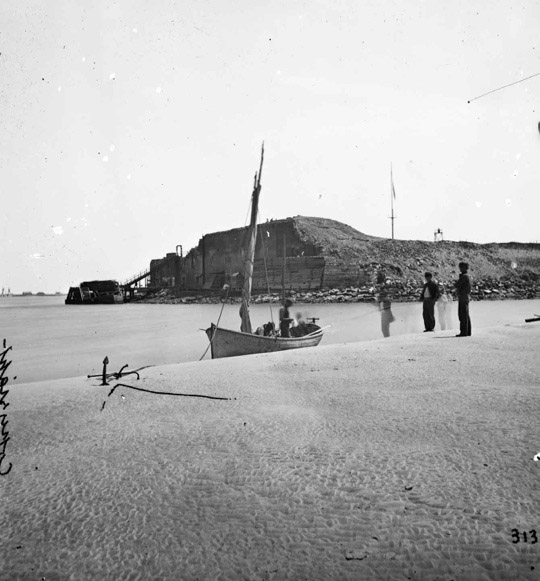
This is a photo of Fort Sumter taken in 1865 from the Sand Bar
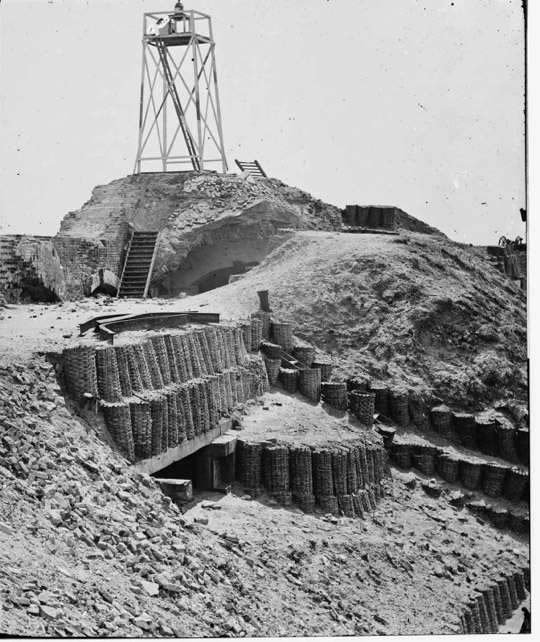
This is a photo of Fort Sumter taken in 1865 showing beacon on parapet of Fort Sumter
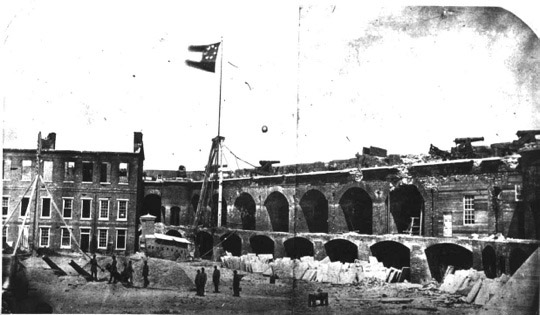
This is a photo of the interior of Fort Sumter with the Confederate Flag flying.
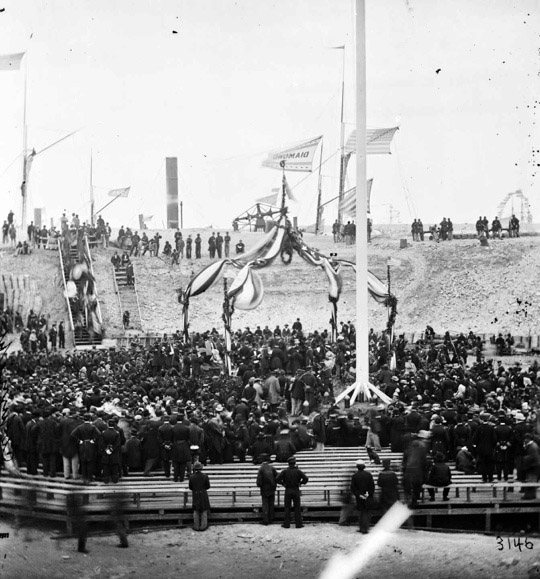
This is a photo of the raising of the American Flag at Fort Sumter.
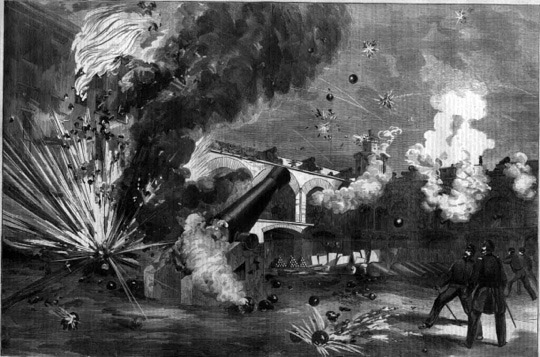
This illustration from Harpers Weekly shows the view from inside Fort Sumter during the bombardment.
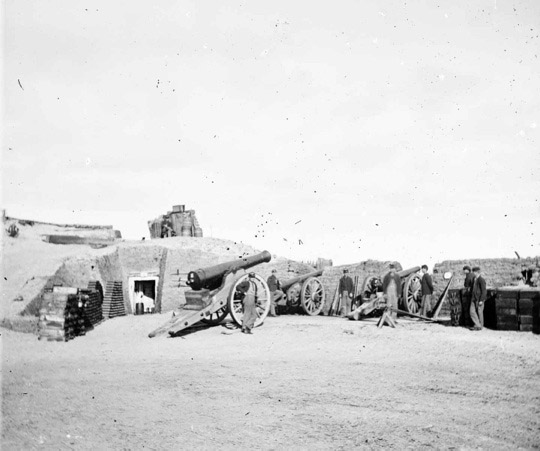
This is a photo of the interior of Fort Putnam on Morris Island showing guns which fired over 1200 shots into Sumter. Cooley, Sam A. (Samuel A.) photographer
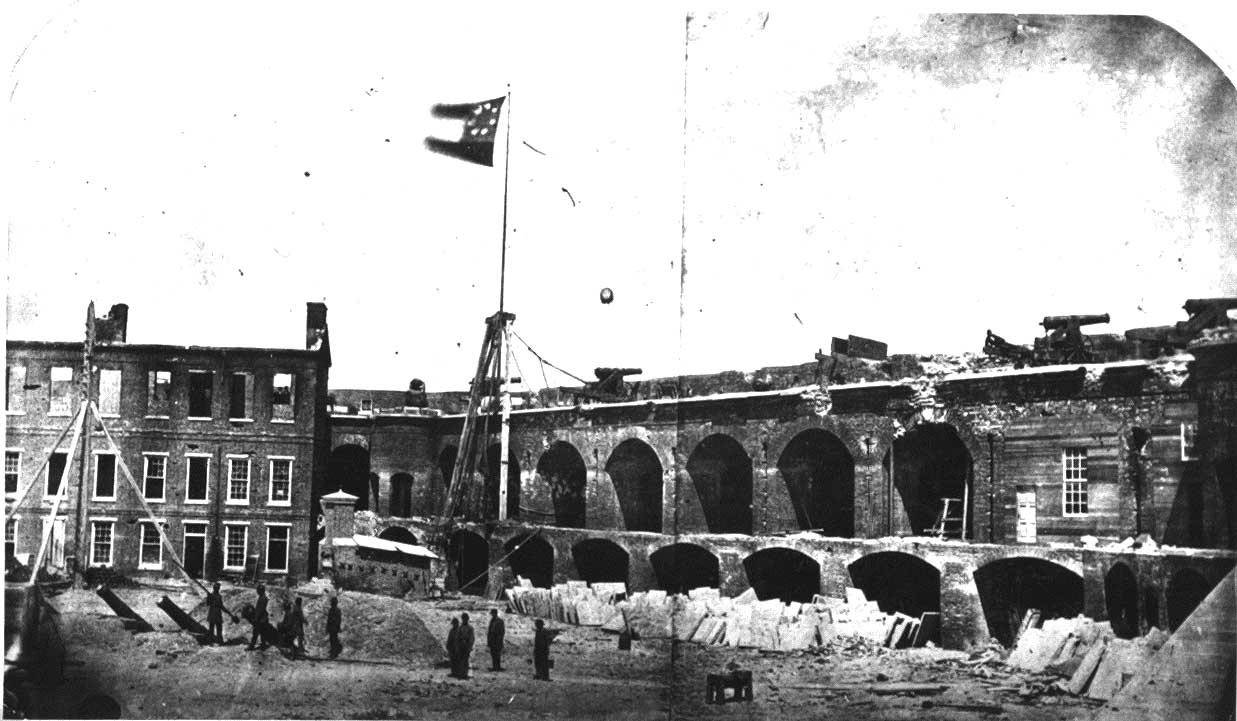
After the Capture
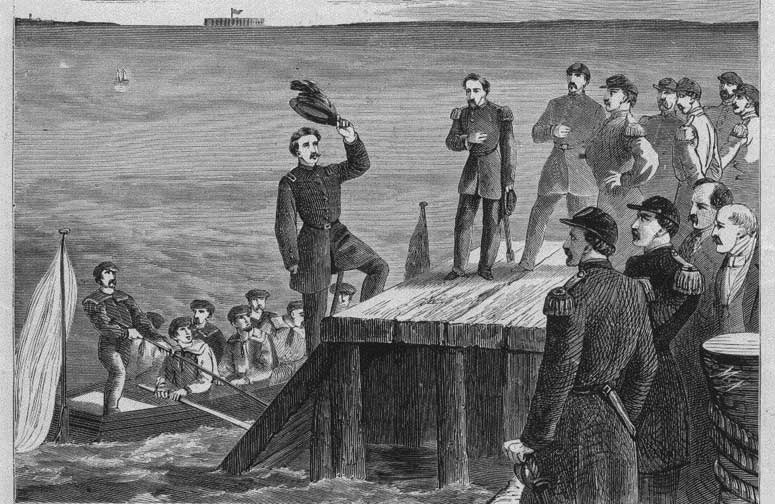
First Cearsefire
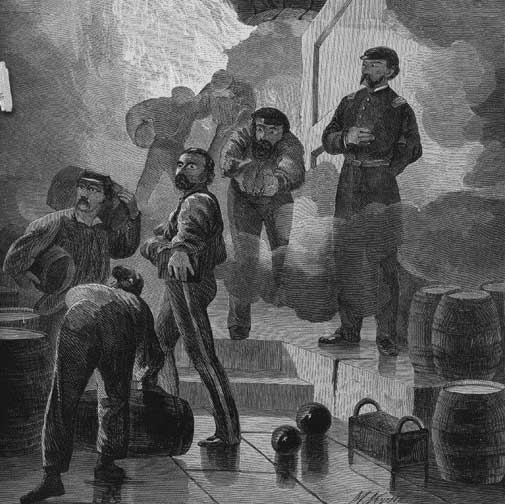
Magazines in Ft Sumter
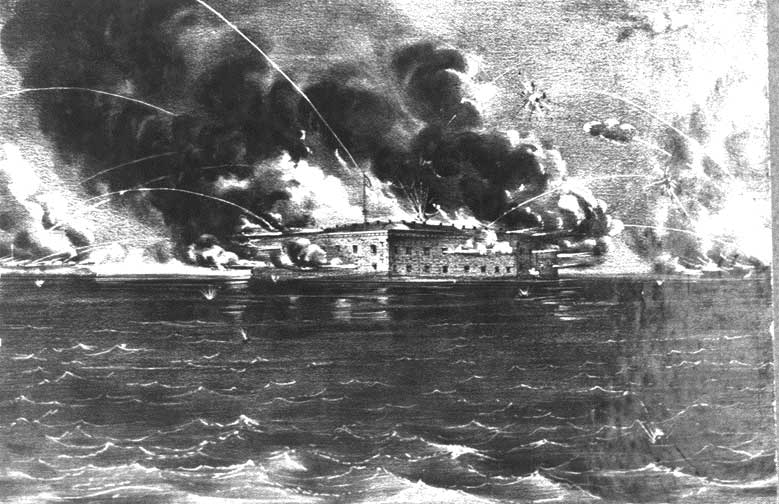
Confederates Firing on the Fort
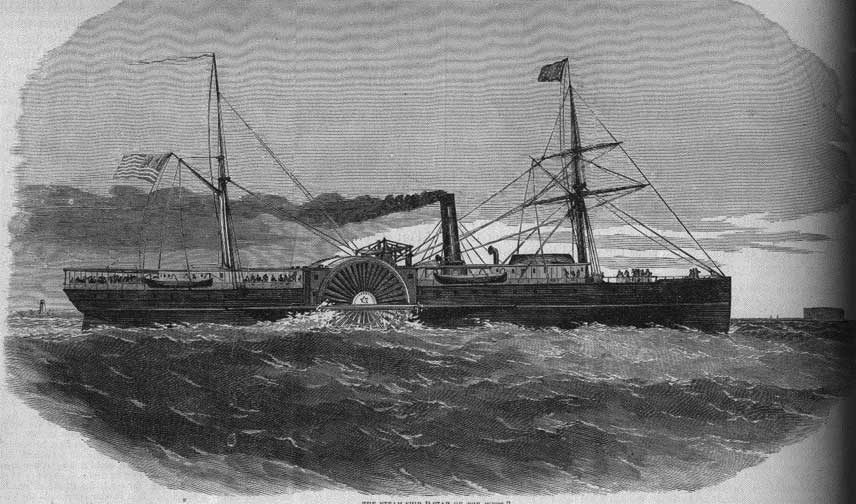
Star of the West
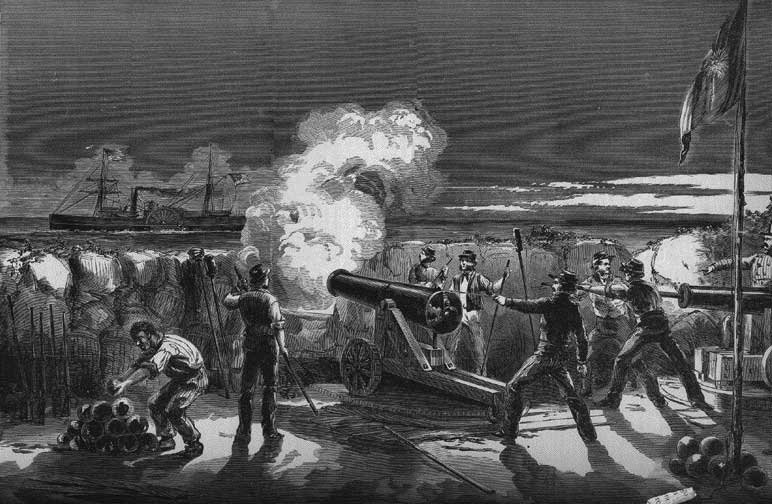
Confederates Firiing on the Star of the West
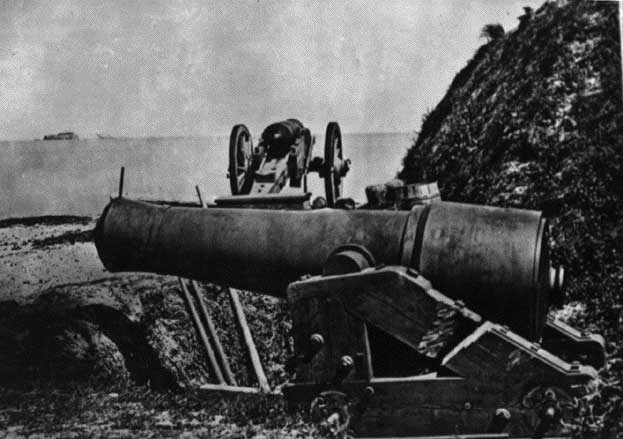
Ft Sumter from Ft Johnson

Interior View of Ft Sumter
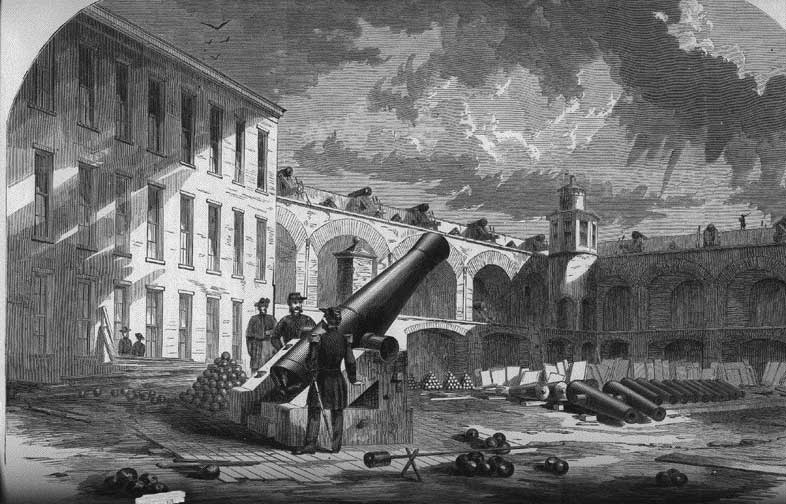
Preparing Ft Sumter
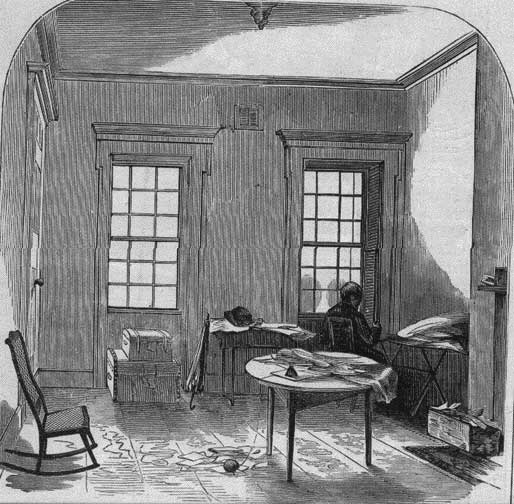
Major Andersons Room in Ft Sumter
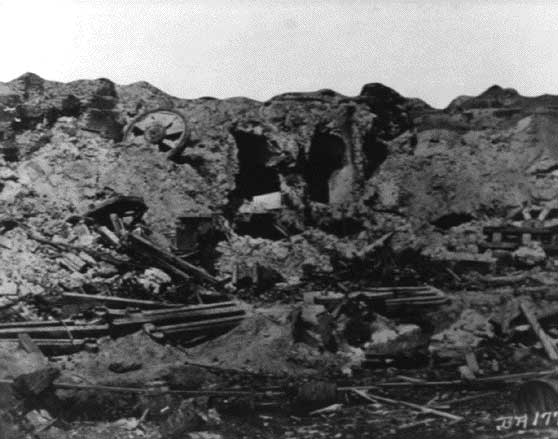
Destroyed Fort
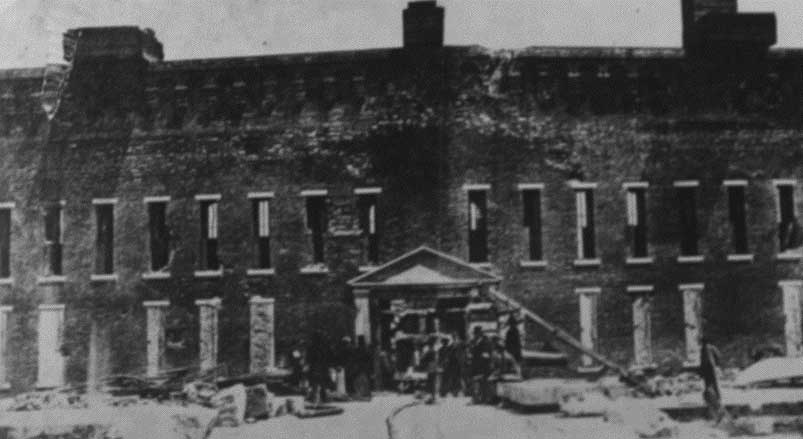
 >
>